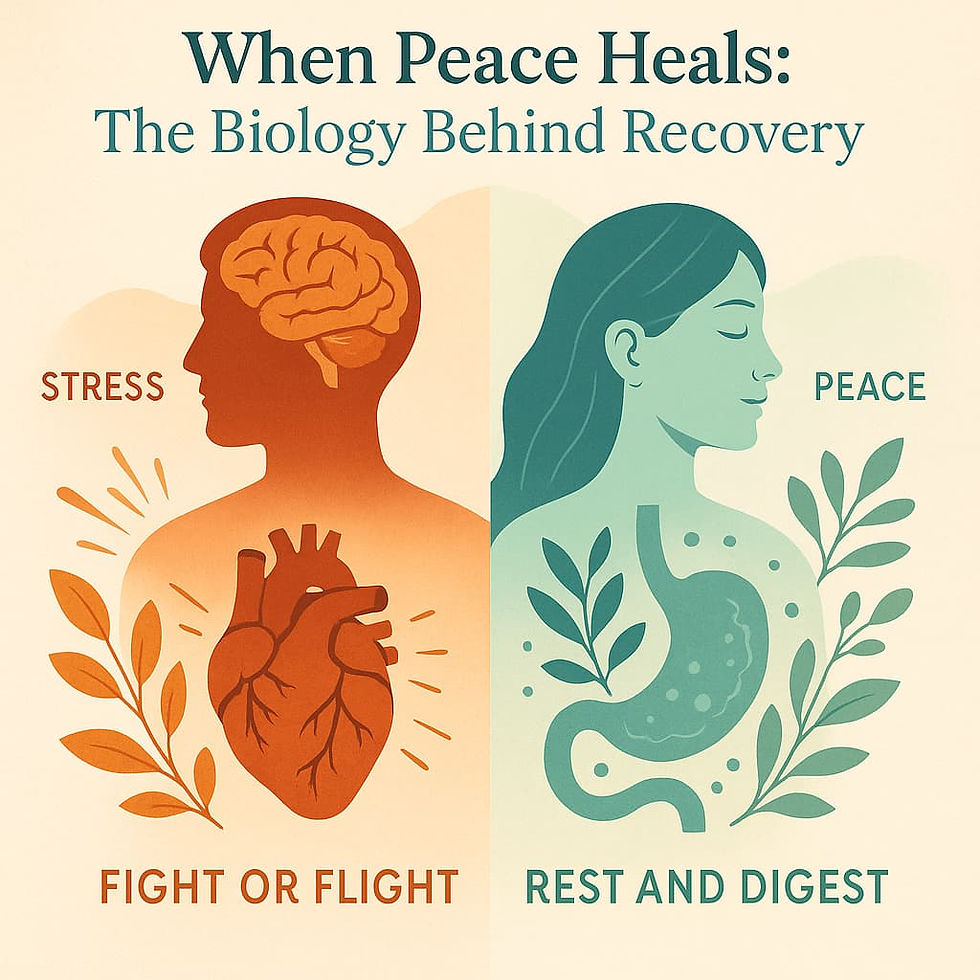Understanding the Profound Impact of Acupuncture
- Clark R. Mollenhoff III M.Ac., L.Ac.

- May 6
- 3 min read
Updated: Jul 17

When an acupuncture needle meets the body, something profound occurs. What seems like a simple insertion of a fine needle at specific points initiates a cascade of biological responses. These responses extend far beyond the immediate area, engaging systems throughout the body to encourage balance and healing.
The Biological Response Begins: From Needle to Nervous System
The moment the needle makes contact, sensory nerve endings are stimulated. These nerve fibers then send action potentials, or electrical impulses, through the peripheral nervous system to the spinal cord and brain.
In response, the central nervous system releases key neurochemicals that influence both the body and the mind, including:
Endorphins: Natural analgesics that reduce pain and promote ease.
Serotonin: Regulates mood, sleep, and emotional balance.
Dopamine: Associated with motivation and positive reinforcement.
At the same time, acupuncture enhances microcirculation. Blood vessels dilate, increasing the delivery of oxygen and nutrients while supporting waste removal. This process improves tissue health, reduces inflammation, and creates optimal conditions for repair. While these physiological effects are documented, they represent just one layer of acupuncture’s influence.
Guided by the Meridians: The Importance of Point Location
The broader impact of acupuncture is deeply connected to where the needles are placed. Point selection relies on the system of meridians, which describe pathways of connection throughout the body.
Traditionally understood as channels for the flow of Qi, meridians can also be viewed through the lens of modern science as maps reflecting the body’s natural networks of communication and responsiveness. Studies show that acupuncture points often align with key anatomical features:
Fascial planes: Transmit mechanical and chemical signals across tissues.
Neurovascular bundles: Concentrated areas of nerve and blood vessel activity.
Zones of lower electrical resistance: Where subtle modulation has significant effects.
Meridians provide an elegant framework for understanding how stimulating specific points can influence nearby tissues as well as distant and seemingly unrelated systems.
Tapping Into the Body's Regulatory Networks
The ripple effects of acupuncture travel through some of the body’s most vital regulatory systems. When precise points are stimulated, the body adjusts key mechanisms to maintain internal balance:
The Autonomic Nervous System shifts toward parasympathetic activity, supporting rest, recovery, and repair.
The Hypothalamic-Pituitary-Adrenal (HPA) Axis modulates, helping regulate hormones, stress resilience, and inflammatory responses.
The Immune System adjusts, with evidence suggesting acupuncture influences cytokine activity and reduces excessive inflammation.
Through these pathways, acupuncture fosters a return to homeostasis, the dynamic state of balance essential for health and healing.
Ancient Maps, Modern Mechanisms: A Unified View
As our understanding of human physiology deepens, the value of meridians becomes clearer. They serve as guides for practitioners, helping them identify where to engage the body to promote systemic harmony. Viewed together:
Science offers insight into how the body responds to stimulation.
Meridians provide clarity on where and how to initiate those responses effectively.
This integration of traditional knowledge and contemporary research showcases the essence of acupuncture. It is not merely a mechanical procedure nor solely an energetic tradition. Instead, it represents a thoughtful interaction with the body's innate capacity for healing.
The Acupuncture Experience: Patient Perspectives
Many patients describe their acupuncture experiences as transformative. They report relief from chronic pain, improved sleep, and reduced stress. These benefits are rooted in the intricate processes activated during treatment.
Patients often find that the effects of acupuncture extend beyond the physical. Mental clarity and emotional balance significantly improve, supporting overall well-being. Each visit becomes not just a treatment but a step toward holistic health.
Conclusion: Embracing the Healing Power of Acupuncture
Through careful point selection and mindful application, acupuncture reestablishes connections within the body’s intricate web of relationships. It encourages the body's natural intelligence to flourish. The profound effects of acupuncture demonstrate the power of connecting traditional practices with modern science.
Whether you are exploring acupuncture for the first time or continuing your journey, remember that the goal is holistic health. Consider incorporating acupuncture into your wellness routine to tap into its deep healing capabilities.
Acupuncture is more than a remedy; it's a path to a balanced body, mind, and spirit. Embrace the healing power of acupuncture and experience the transformation for yourself. If you're interested, you can find more information here.




Comments